Have you ever heard of anyone, who is even remotely interested in Australasian tennis’ utter in ‘pythonesque’ manner, ‘What have the Herefordians ever done for us?’. Doubtful! Hereford after all can claim renown for cider brewing, Edward Elgar’s Enigma Variations, Nell Gwyn (perhaps), and the iconic image of Ronnie Radford’s goal celebration in the 1972 FA Cup. However, lawn tennis in the southern hemisphere does not factor significantly in the sporting history of the cathedral city. Yet two small villages, just south of Hereford, quite unremarkable to the casual observer, can rightly claim some bragging rights to the growth of tennis in Australia and New Zealand at the start of the 20th century. It is remarkable to think that Fownhope and Callow would be associated with two men, who in their own way would bring lawn tennis in the southern hemisphere to the forefront of world attention, helping Australasia to win, and then dominate, the Davis Cup.
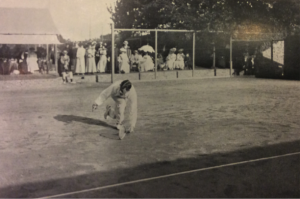
Norman Everard Brookes Dinard (1905)
Between July 13 and 24, 1907, at Worple Road Wimbledon, Norman Brookes and Anthony Frederick Wilding took on the United States and Great Britain in the final, and challenge round of the Davis Cup competition. Brookes dominated the tournament, winning all four of his singles matches. However, prior to the attempt to secure the Cup for Australasia, there was some concern with his physical capacity to engage in protracted games. Wilding himself reported, ‘Norman had to be very carefully handled, for the slightest over-exertion knocked him up.’ Not only was Wilding crucial as Brookes’ partner on court, he was called upon to assist with his physical preparation. Journalist, A. Wallis Myers reported, ‘Brookes had a difficult inside and it was part of Anthony’s function to see that his captain did not abuse his physique.’ Wilding was probably the first tennis ‘athlete’ and managed Brookes’ physical training, starting each morning at 7.00 a.m. and finishing in late afternoon. The training at Brookes’ home in Melbourne clearly paid dividends. Wilding had placed the final piece in the Brookes jigsaw; a puzzle that had commenced a few years earlier by another, but less well-known, player- Dr. Wilberforce Vaughan Eaves.
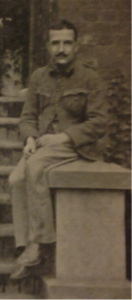
Wilberforce Vaughan Eaves on his return from service in the Boer War
Between 1891 and 1902, Eaves travelled the world; he was probably the most widely travelled player of the period. A particular significant trip was the 1897 visit, to play in America. The culmination of the tour was the U. S. Championships. Eaves won the All-Comers competition, before narrowly losing in the challenge round to Bob Wrenn. In the New York Times in 1897, it was reported that in ‘one of the finest matches ever seen on the Casino courts… Eaves played by far the better tennis.’ Wrenn himself later acknowledged he was lucky to win. Whilst he returned to England without the championship trophy, he had secured an even greater treasure. Eaves had studied the American players closely. J. S. Mitchell of the Sydney, Referee, writing in 1919 reported: ‘The doctor did more than make a bold bid for the American crown, as he took back with him to his native heath an exact copy of the American service’.

Eaves (far left front row) and Bob Wrenn (third from left back row) 1897
In Australia in 1902, Eaves secured the NSW Championship. In that year, he penned an article for the Referee, in which he compared the game in England and Australia. Whilst critical of the Australian players, he picked out Norman Brookes, as one of the three top players he had seen. Eaves saw in Brookes a latent genius of the court, and thus began his coaching relationship with ‘the wizard’. Prior to 1902, Brookes’ game was at best naïve. He was a powerful baseline hitter, but paid scant attention to the tactical aspects of the game. A. Wallis Myers wrote, ‘Eaves could see, as others declined to, that the days of the long baseline rallies were gone’. He knew, Brookes had raw talent, but his game required honing, both technically and tactically. Eaves claimed that volleying was the only profitable line under modern conditions. ‘Don’t let the other man enjoy the view of your court while you can see next to nothing of his’, he proffered.
The re-moulding of Brookes’ tactical approach to the game was not Eaves’ whole focus. He was equally aware of his technical deficiencies. If he had designs on the Wimbledon crown, the American serve had to be mastered. Over the next few years Eaves not only taught Brookes the intricacies of the serve, but also, further modified and adapted this service, by adding more pace with a lessened kick. The Doctor’s work paid dividends. Writing in 1922, E. A. Beamish lamented the success that this serve had given Brookes, in winning the Wimbledon championships. ‘Once more the English players were defeated through inability to find a counter to this changed attack’.
Eaves and Wilding worked diligently and systematically with Brookes, and in doing so helped to sculpture him into one of the greatest tennis player of all time. In the seven years prior to the onset of the First World War, Australasia secured control of the Davis Cup competition, winning it on five occasions. Wilding and Brookes dominated the game, winning the Wimbledon singles title seven times between them. Australasia was firmly established in its pre-eminent place in world tennis. Hereford, in contrast, has not yet received any accolade for its role in the story. Yet, whilst both Eaves and Wilding were Australasian by birth, their respective families were Hereford born and bred. Eaves’ mother Eunice Vaughan of Callow migrated to Australia in the early 1850s, where she met and married former ship bread baker William Eaves. Wilding’s mother, Julia, was the daughter of Hereford Times owner, Charles Anthony. His father, Frederick, a barrister and keen local sportsman, took his family from Hereford to New Zealand, where Anthony was born in their family home, ‘Fownhope’. Hereford can truly claim to have been instrumental in the rise of Australasian tennis at the start of the last century: ‘Invictae Fidelitatis Praemium’.
Article © Simon Eaves

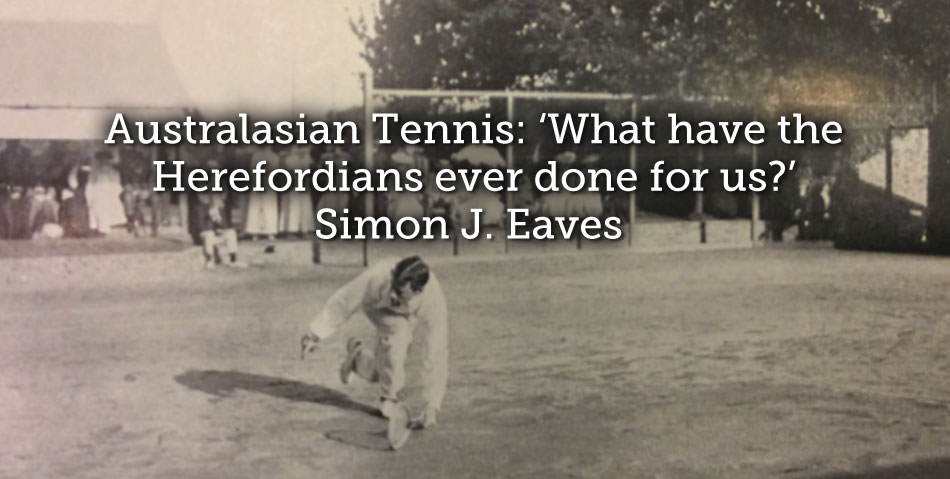
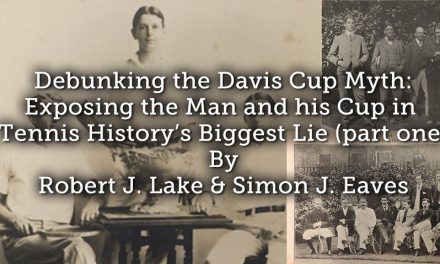
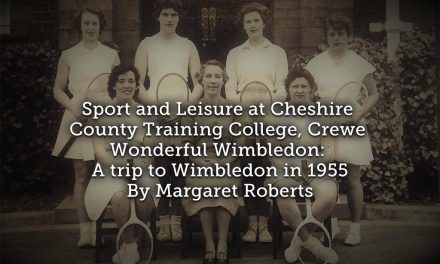


Having had a dream about being visited by a man dressed in old uniform who kept saying his name Captain Wilberforce. Decided to google to find that this person was real. I have never read or heard about this man until last nights dream it is strange to find out that he was also a surgeon, having right arm pain since Covid jab wondred if this was the reason that man visited my dreams.